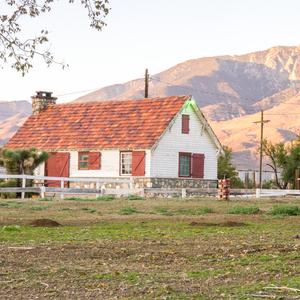Rural America is facing an existential crisis. As cities continue to grow and prosper, small towns are shrinking. That fundamental divide played itself out in the recent presidential election.
Consider this shocking chart produced by the Brookings Institution. It shows that, in 2000, George W. Bush won 2,397 counties (compared to Al Gore's 659), and those counties represented 46% of America's GDP. Fast forward to 2016. Donald Trump won an even larger share: 2,584 counties (compared to Hillary Clinton's 472). Yet, counties that voted for Trump accounted for only 36% of the nation's GDP. Since most Bush counties also voted for Trump, that means -- in a span of just 16 years -- economic productivity shifted by 10 percentage points, away from small town America and toward the big cities1.
The trend is clear: Rural America is literally fading away. It shouldn't come as a surprise, therefore, that the opioid overdose epidemic has hit rural states, like Kentucky and West Virginia, especially hard. And the latest research from the CDC also shouldn't come as a surprise: Suicides in rural America (labeled as non-core) have increased over 40% in 16 years.
From 1999 to 2015, suicide rates increased everywhere in America. On average, across the U.S., suicides increased from 12.2 per 100,000 to 15.7 per 100,0002, an increase of just under 30%. However, in rural America, the suicide rate surged over 40%3, from just over 15 per 100,000 to roughly 22 per 100,000. Similarly, the suicide rate in micropolitan areas (defined as having a population between 10,000-49,999) went from 14 per 100,000 to 19 per 100,000, an increase of around 35%.
On the flip side, major cities saw much smaller increases in suicide rates, on the order of 10%. The graph depicts a clear pattern: Suicide rates are highest in the most rural parts of the country, and they slowly decrease as urbanization increases. As of 2015, the suicide rate in rural areas (22 per 100,000) is about 40% higher than in the nation as a whole (15.7 per 100,000) and 83% higher than in large cities (12 per 100,000).
What explains the difference? The CDC suggests lack of proper mental healthcare, social isolation, the opioid crisis, and lingering effects of the Great Recession, all of which hit rural areas hardest. It appears fixing the suicide epidemic will require addressing very large societal trends and cultural problems.
Notes
(1) Updated March 30, 2017: It was brought to my attention that George W. Bush won several large counties that Donald Trump did not. This probably accounts for the majority of the 10-point "drop" in GDP. However, it is still true that the economy is shifting away from rural areas and toward the large cities.
(2) These numbers were obtained from WISQARS, using the same data adjustments as reported in the CDC graph.
(3) The CDC did not provide exact numbers in this report, so these figures are obtained from reading the graph.
Source: Kegler SR, Stone DM, Holland KM. "Trends in Suicide by Level of Urbanization — United States, 1999–2015." MMWR 66(10): 270–273. Published: 17-March-2017. DOI: 10.15585/mmwr.mm6610a2.





